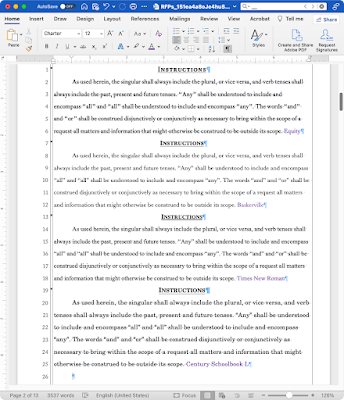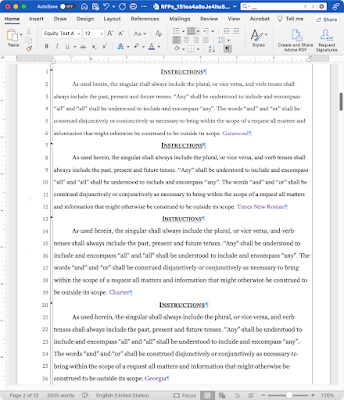Typefaces / Fonts
I love fonts. (Typefaces. Whatever. The terms are interchangeable in common parlance, at this point.) My templates have been using Matthew Butterick’s Equity for years. (Though that makes it something of a PITA to exchange documents with opposing counsel. For those situations, Garamond, I guess.) I love Typography for Lawyers; I have both a physical copy and the eBook; much of the content is also available on his website.
If you don’t want to spend upwards of $100 on a font, there are free versions of Baskerville available (it’s also a Macintosh system font, and should be installed with Microsoft Office on Windows):
- Libre Baskerville (optimized for screen reading; many courts are now making uploaded PDFs available to jurists on tablets and large screens)
- Open Baskerville (direct link to ZIP file on archive.org) (Font Library page)
For more information on why fonts matter, I recommend reading The Baskerville Experiment: Font and its influence on our perception of truth. For fun and more of a deep dive, there's the documentary Helvetica.
The Seventh Circuit has also weighed in, with both an internal Type Requirements for Briefs and Other Papers and by hosting a copy of Painting with Print‡. These recommendations are incorporated into the Practitioner’s Handbook for Appeals (Chapter XXIII, starting at page 170). (And now, the D.C. Circuit has weighed in, requiring serifs and recommending against Garamond.)
I’ve also recently learned the Arizona courts have similar requirements: “Type Size and Font. Notwithstanding any local rule, every typed document must use at least a 13-point type size. The court prefers proportionally spaced serif fonts, such as Times New Roman, Bookman, Century, Garamond, or Book Antiqua, and discourages monospaced or sans serif fonts such as Arial, Helvetica, Courier, or Calibri.” 16 A. R. S. Rules Civ. Proc., Rule 5.2(b)(1)(B).
The Supreme Court has its own specific font requirements: “Century family (e.g., Century Expanded, New Century Schoolbook, or Century Schoolbook) 12-point type with 2-point or more leading between lines.” (Rule 33.) An open source version of New Century Schoolbook is available (along with other open source fonts).
If you’re a lawyer writing briefs for a living, and you’re using a monospaced or san serif font ... Well, I suggest rethinking that. If you’re using Times New Roman or some other default font in Word ... That’s just lazy. 😉
Update: January 23, 2024, a typeface discussion on a lawyer forum lead me to Butterick’s page on Charter, which, yep, is a Macintosh system font, starting with High Sierra (released in 2017). But it takes up significantly more space than Times New Roman or Baskerville. (The screenshots below use Equity Caps for the Equity example heading, but otherwise use Word’s built-in “small caps” formatting.)
 |
| Comparing Equity, Baskerville, Times New Roman, Century Schoolbook L |
 |
| Comparing Garamond, Times New Roman, Charter, and Georgia |
‡ Also available at https://scholarship.libraries.rutgers.edu/view/pdfCoverPage?instCode=01RUT_INST&filePid=13643523850004646&download=true

Comments
Post a Comment